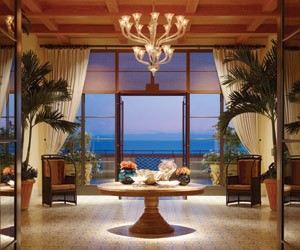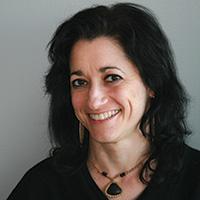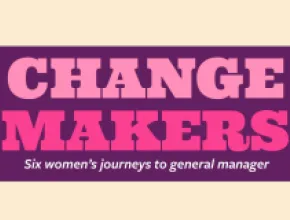What with the ailing economy and perception issues surrounding corporate meetings, it’s little wonder if resort and destination spas, known for their pampering environments, are feeling some of the heat.
In general, spas are experiencing new trends in line with the economic downturn, according to International SPA Association (ISPA) President Lynne McNees.
“Our members are telling us that people are still going to spas, but reducing the time and number of treatments they receive,” McNees says.
Many spas are offering more 30-minute treatments instead of the traditional 60- or 90-minute treatments. At the same time, many are offering discounts and packages for groups and are emphasizing the health—not the pampering—aspects of spa treatments.
Group Trends
That trend applies to the group market as well. Some destination spas are seeing more of a drop-off on business from groups than from individuals, and many are losing meetings altogether.
“We just had a big group on a second cancel—last year due to the economy, this year because of the AIG effect,” says Verdell Ekberg, regional director of sales and marketing for Sanibel Harbour Resort and Spa in Fort Myers, Fla. “I would say the total number canceled in the last 14 months due to the economy is probably in the neighborhood of $7 million worth of canceled business. It’s not a small number.”
In a normal environment, according to Ekberg, 55 percent to 60 percent of the resort’s business is groups while 40 percent to 45 percent is leisure, but the numbers have flip-flopped in 2009.
“Groups that are here are cutting back,” Ekberg says. “They are more aggressive in asking for discounts, and we’re not seeing the big gala events. They are not hiring companies to decorate. It’s much more low-key, with pretty standard beverage options and more affordable dinners.”
In addition, groups are not using the spa, according to Ekberg. Group-related spa usage is down 50 percent from last year. In response, the resort this year is offering groups its TARP (The Absolute Recovery Package) Meeting Package, which includes 25 percent off any spa treatments for the entire group.
At The Greenbrier, a historic resort in White Sulphur Springs, W.Va., known for its 40,000-square-foot spa as well as its lush setting with three golf courses and indoor and outdoor tennis courts, the economy has taken its toll. The property recently filed for Chapter 11 bankruptcy and is being sold to Marriott International.
“We have seen a significantly higher number of cancellations due to the economy and a lot less bookings for groups,” says Jerry Wayne, vice president of sales and marketing. “Cancellations are as severe as I’ve ever seen—a combination of the economy and the perception issue. We had one cancellation today in a very prosperous industry and they said they would have their meeting closer to home, not necessarily that they couldn’t afford it but because of the perception of going to The Greenbrier among shareholders, employees or customers.”
Despite the challenges, there are some resort spas weathering the economic storm relatively well. The Mayflower Inn and Spa in Washington, Conn., is benefiting from its down-to-earth setting, according to Christine Afiouni, director of sales for the property. Although it’s a luxury resort, the Mayflower’s English-style country setting proves that less is more.
“You don’t have to wear a jacket or tie. A lot of our groups appreciate that,” Afiouni says.
At The Ritz-Carlton, Lake Las Vegas, being removed from the Las Vegas Strip in Henderson, Nev., has been beneficial, according to Amy Moser Harrison, director of sales and marketing. However, she does have concerns for the future.
.“Incentives use us a lot,” Moser Harrison says. “I think that’s one area, incentive trips probably are being cut back. It’s hard to say because it’s still early in the year, but people are being more conscious of spending.”
Wellness Aspect
One approach that resorts are taking to combat the image of frivolous corporate spending is to highlight the wellness aspect of spas.
“Spas are not about pampering, they are about helping consumers maintain a healthy lifestyle,” McNees says. “The number one reason that people go to the spa is to reduce and relieve stress. With the impact of the economy on our minds, the spa is the perfect place to take time out and recharge your batteries.
“At the spa you’ll learn techniques to incorporate into your daily routine that can help reduce the chance of a stress-related illness down the road.”
Mii Amo Spa at Enchantment Resort in Sedona, Ariz., has always focused on the wellness aspect of the spa experience. The spa name translates to a journey or a passage, according to Tina Newman, director of sales and marketing for Enchantment Resort and Mii Amo Spa.
“Emphasis is more on wellness rather than overindulgence; we want people to be taking care of themselves mentally, physically and spiritually,” she says.
The spa offers dream interpretation, heart meditation and a Native American-style, 60-minute inner quest session, among other treatments. The centerpiece of the spa is a crystal grotto fashioned after a Native American kiva, a room used for rituals.
“Everybody needs stress release right now,” says Lindsay Curry, director of sales for the resort. “Anytime you can incorporate a spiritual or inner quest experience into a program for a corporation that is not just rewarding or expanding the bottom line, it’s incorporating a motivational element into the program. Attendees see it as exciting.”
Sundara Inn and Spa in Wisconsin Dells, Wis., shares the philosophy. Sundara focuses on everything from organic body wraps to chakra therapy. The resort’s intimate setting attracts smaller groups of 20 people or less.
“We’ve always been based on wellness and that is a benefit to us,” says Tara Duarte, guest relations manager for the spa. “Sundara is drawn from the Sanskrit word for beautiful. We interpret that as beauty flowing from wellness. Groups look at it as a form of wellness—if you’re balanced you can be more productive and have better ideas and be more creative.”
Sundara has not felt much impact from the economic downturn, she adds.
At Nemacolin Woodlands Resort Spa in Farmington, Pa., where group business is a large percentage of the resort’s clientele, Tom Smith, assistant director of sales, says attendees have become more aware of the benefits of the spa and are now more inclined to pay for it themselves.
“More corporations are also understanding that a healthy employee will mean less health care costs,” he says.
The Ritz-Carlton, Lake Las Vegas also stresses the healing benefits of its spa.
“We feel the wellness approach is a way to create meaning and impact as an add-on to a group function,” Moser Harrison says.
Many spas are also offering packages that are discounted up to 20 percent, as well as group discounts, according to ISPA’s McNees.
“More and more spas are getting back to basics by allowing the consumer to book time instead of a certain treatment,” she says. “This allows the spa-goer to have one-on-one time with the spa professional to customize a treatment to meet their needs.”
At Mii Amo, Curry says there is a wellness package that includes a daily $50 credit for each attendee to use at the spa, a morning or afternoon break with a smoothie bar, as well as group stretches and meditation on meeting days.
Nemacolin also offers spa packages.
“Our packages are based on the season,” Smith says, citing the resort’s Spring Fling Conference Package as an example. “We can customize it. If there is a group that can pay for x dollars worth of treatments, we’ll do that.”
“Travelers are savvy these days,” Sundara’s Duarte says. “Especially CEOs looking for deals and value. One of the things that shows value is to have all amenities included—free parking and Wi-Fi. We are also offering deeper discounts midweek and have removed some restrictions on minimum stays. We’re fortunate we have a lot of value to offer.”







